Digital Libraries in schools of rural Karnataka
Posted by Vineetha Menon on February 04, 2019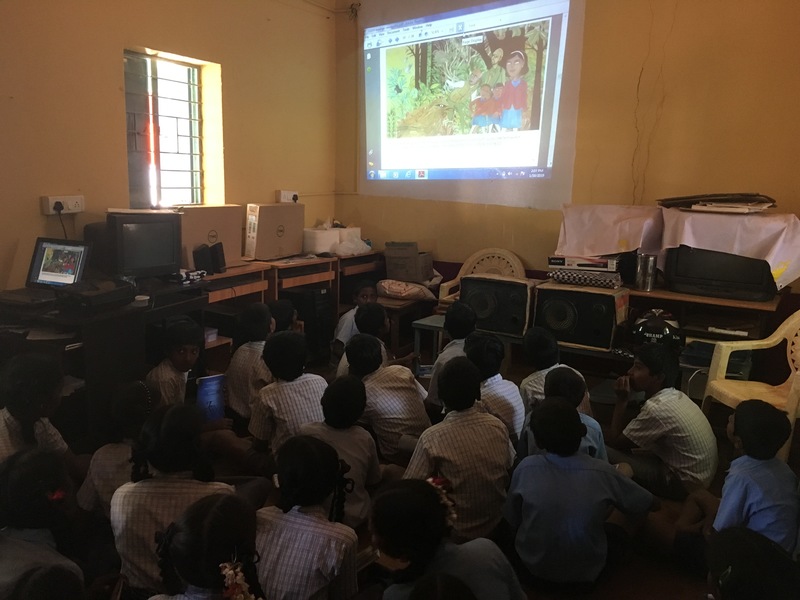
Suganya, from the Partnerships team, takes us on a journey to Tumkur where India Literacy Project is implementing a Multi-Dimensional Learning Spaces program with the government schools.
Getting there
The two-hour ride to Tumkur through traffic and on roads under-construction had taken a toll on our energy levels. But meeting children filled with enthusiasm for the read-aloud instantly put a smile back on our faces.
We were greeted by Latha, an India Literacy Project (ILP) Facilitator. She has been instrumental in implementing StoryWeaver content as a part of their Multi Dimensional Learning Space (MDLS) programme. Over 16 facilitators who work across 30 schools in Tumkur, Karnataka, identify schools in need, coordinate with partner organisations and develop a programme to help children not only with academics but also overall personality development. They provide schools with digital infrastructure, reading material and teacher guides, and also help them implement the programme in the classroom.
Story reading
Children were excited to get started with the read-aloud session. They had picked Smile Please for this. One of the children volunteered to read the story, and the others joined in. Whenever she had difficulty with a sentence or the pronunciation of a word, the class teacher and the ILP facilitator chipped in to help her out.
We were awed by the children’s enthusiasm and decided to do an impromptu reading session for them. One of our team members stepped in and interacted with the children in Kannada, doing another reading. It was way past the children’s lunch time, but they wanted their fill of stories first.
While the students were getting ready to enjoy their mid-day meal, we bid goodbye and continued our journey to visit more children.
More stories…
Once we reached the next school, we met with the headmaster and the ILP facilitator, Tejaswini. Teachers there have found it easier to introduce science and mathematics concepts using our STEM books. Children operate the computer and the projector during their free time to read stories on their own.
Without further ado, we began another read-aloud session with the children. This time, children had decided on Welcome to the Forest. Children enjoyed the narrative and also gained insights about the forest and animals that call it home. We asked the children, “What is your favourite book and which story do you enjoy reading aloud in class?”. We were happy to hear varied responses, but Dum Dum-a-Dum Biryani! turned out to be everyone’s favorite.
We were glad to see the children read and relate to the characters portrayed in our books. We believe that an incredible future awaits the children. With partners like ILP, we get that much closer to making our vision a reality.
Be the first to comment.
Stories in the languages of the world
Posted by Remya Padmadas on February 21, 2017This International Mother Language Day, to celebrate the beauty of multilingualism and linguistic diversity, our intern Rahel put together a list of stories written in the languages of the world. These stories are every bit as beautiful as the languages they’re written in and are accompanied by absolutely gorgeous illustrations.
Gul in Space by Richa Jha and Lavanya Karthik
In this poem, join Gul on her birthday as she goes to outer space. In a dream, she floats in the space station, gets jalebi and samosa in her hair, and is wished by the moon and the stars.
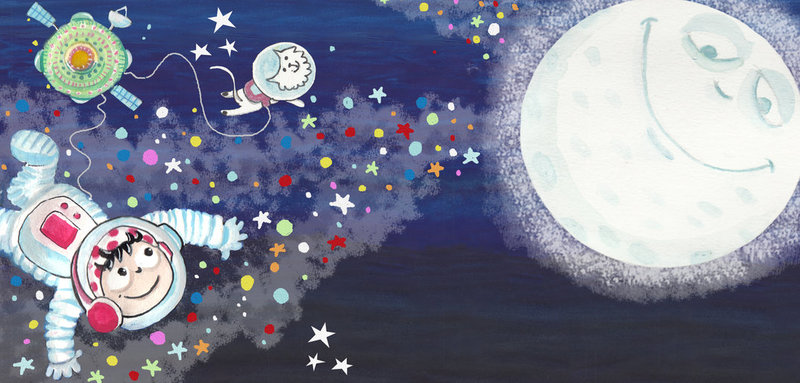
एकशे सदतिसावा पाय (The Hundred and Thirty-Seventh Leg) by Madhuri Purandare
When the millipede breaks one of her hundreds of legs, neither the sparrow, nor the butterfly, nor any of the other animals want to help her. The only animal willing to help is the spider. But for the spider to wrap her leg in his silk thread, she needs to teach the spider how to count beyond eight.
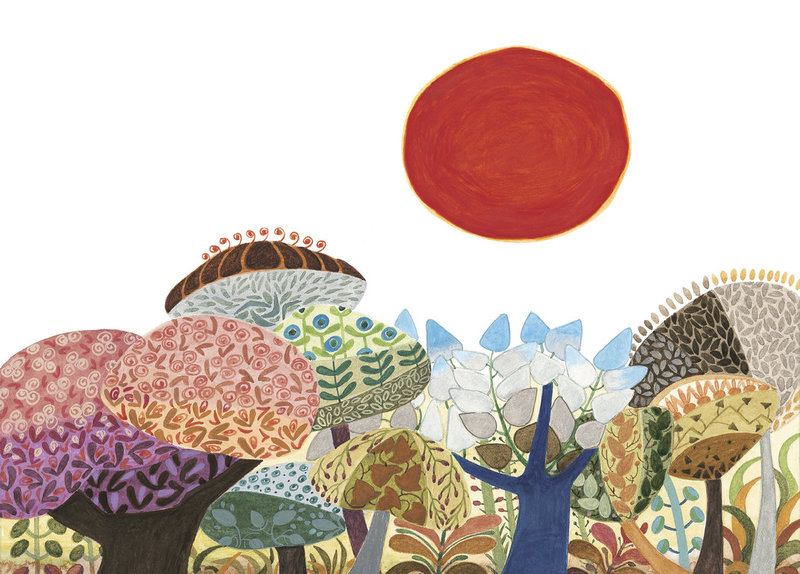
ಮೊಲ ಮತ್ತು ಆಮೆ (The Hare and the Tortoise. Again!) by Venkatramana Gowda and Padmanabh
Remember the famous race between the hare and the tortoise? The story that coined the phrase “slow and steady wins the race”? Now put a twist on that. A twist that requires the animals to work together in order to deliver a message from their king to the neighbouring king, in a day. In this story, follow the hare and the tortoise in their race against time instead of each other.
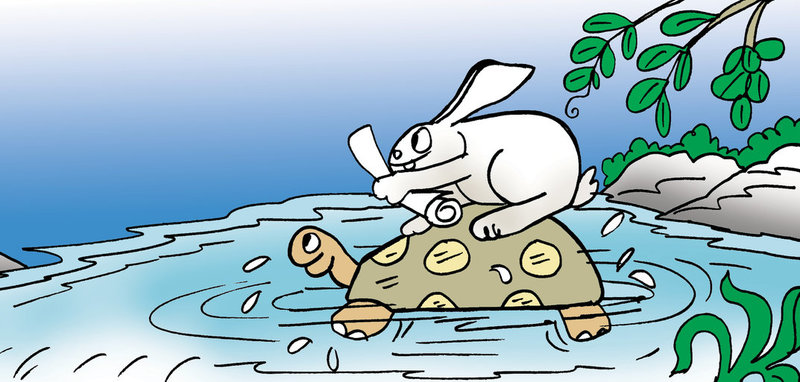
ଏଣ୍ଟେଜ ସେଂକଏ ଆଉ କୁଲାବ୍ ସୁମୁସିଞ୍ଜ୍ /କୁକୁଡ଼ା ଏବଂ ବେଲ ଗଛ (The Clever Chicken/चतुर चूज़ा) by Juanga Writer’s Group and Sugrib Kumar Juanga
In this beautifully illustrated, bilingual book, a little chicken is being relentlessly hunted by a hungry jackal. Can the chicken successfully outwit the jackal in his endeavour to eat it and escape his jaws once and for all?
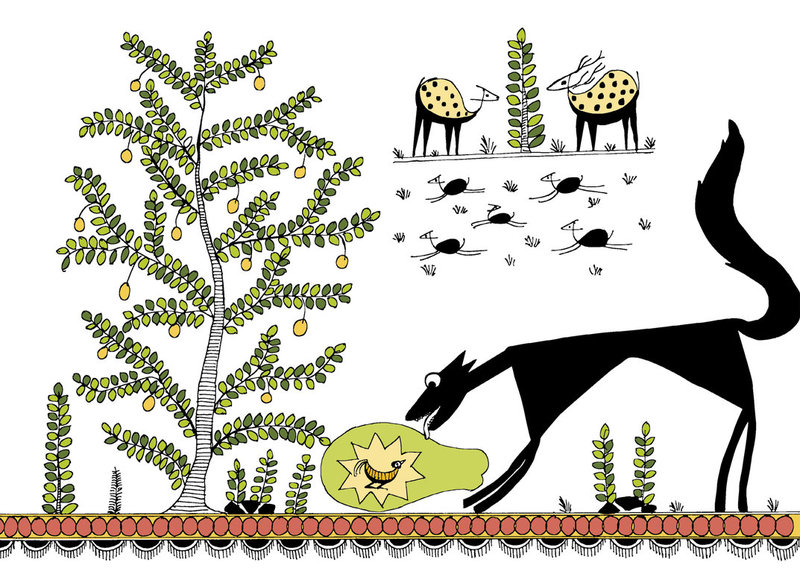
ముక్కు విరిగిన రామచిలుక (The Parrot with the Broken Beak) by Shahid Anwar and Shailja Jain Chougule, translated by Nagaraju Nichenametla
Watch Kansi, a budding artist, as she takes her father’s favourite pen and draws a blue parrot on the wall, breaking the nib of the pen in the process. After she faces an angry father, she goes to sleep to meet an angry, blue parrot with a broken beak in her dream who teaches her wrong from right. This colourful story is perfect for children.
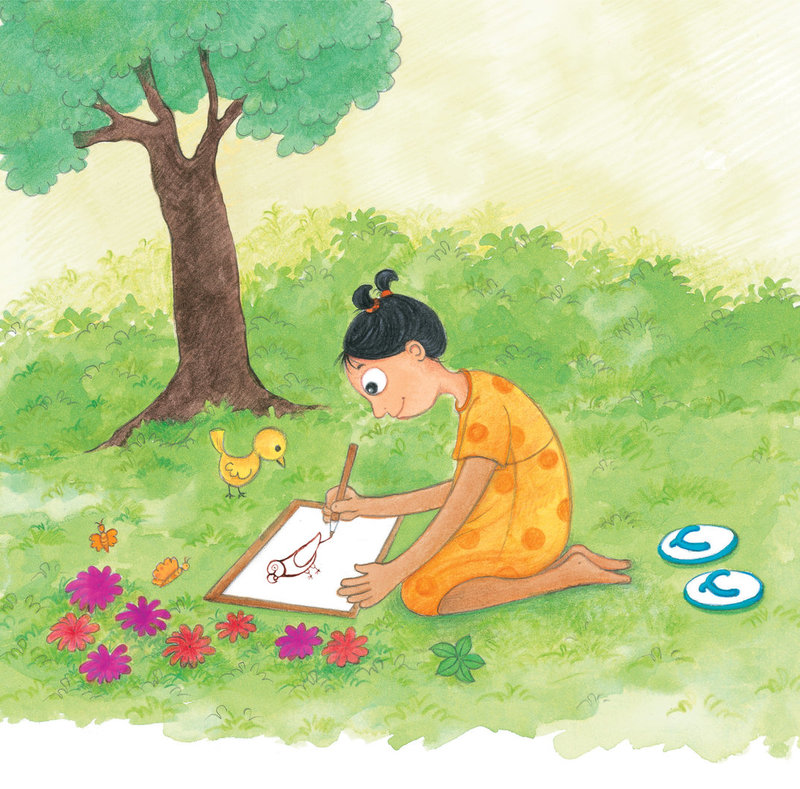
بادشاہی پارک (Badshahi Park) by Shahid Anwar and Tapas Guha
When Ashhar laughs at Zulfi for being afraid of the king’s grave, Zulfi dares him to go in there, by the light of the full moon, and hammer a nail into the head of the forbidden grave.
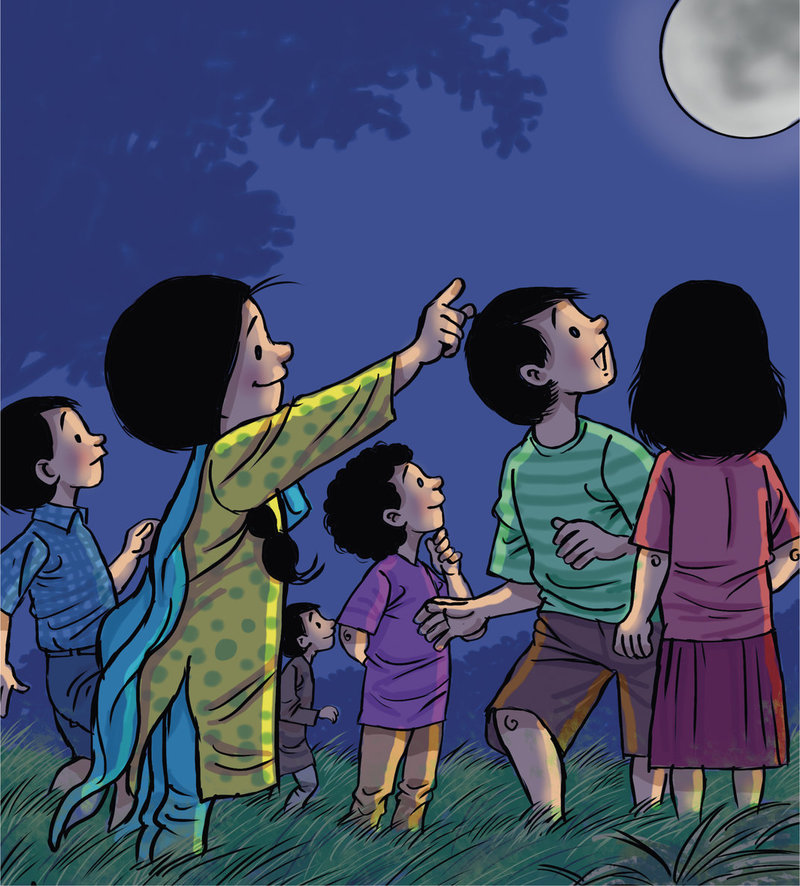
துப்பறியும் துரை (Kaushik, The Kind Detective) by N. Chokkan and Megha Vishwanath
Armed with a brand new torch and magnifying glass, Kaushik goes exploring the forest like a true detective. When he examines a group of mushrooms, he discovers Lalitha, a tiny girl, sitting under the mushrooms.
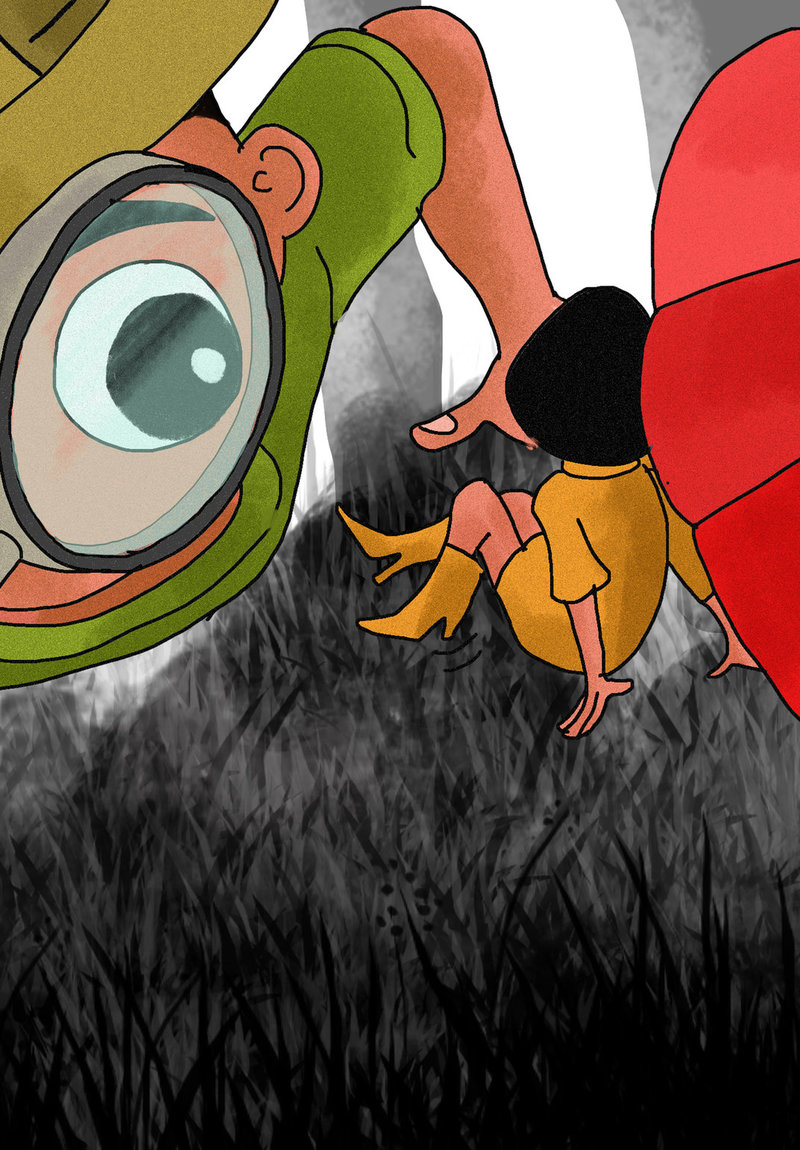
ਬਾਣੀ (Bani) by Herminder Ohri and Taposhi Ghoshal, translated by Narinder Singh
Join Bani and her new friends as they float through mushroom town, eating laddoos and chips from mushrooms and drinking from streams of lemonade, orange, and mango juice. A story clearly filled with imagination and perfect for children.
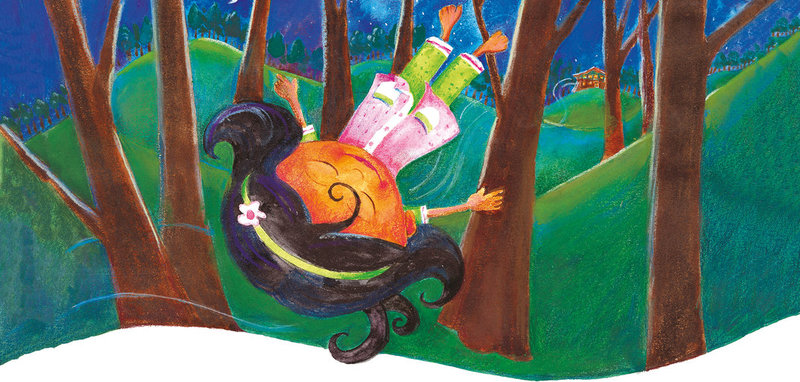
सबरंग (Colourful) by Kamla Bakaya and Audrey Agnier
A book of poetry coupled with gorgeous illustrations, सबरंग is a collection of four poems sure to make you fall in love.
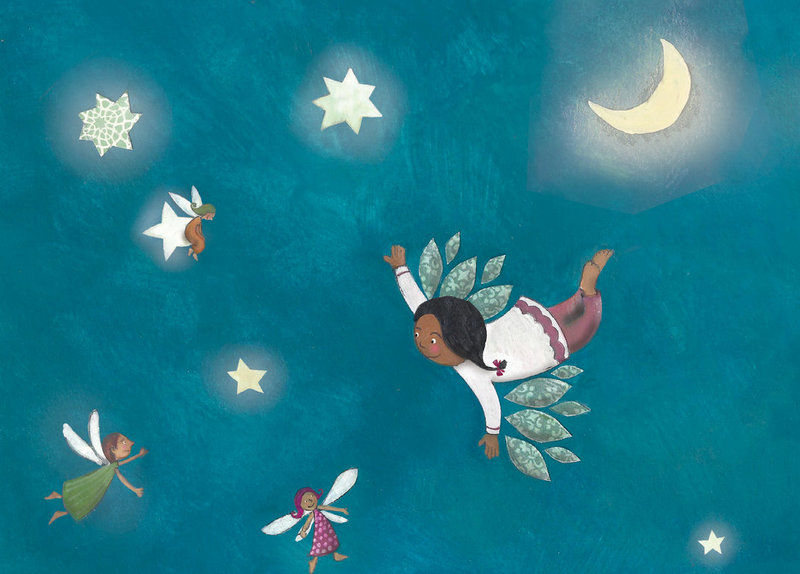
We hope you enjoy these stories as much as we do!
Be the first to comment.In praise of translation… and translators
Posted by Amna Singh on September 29, 2018Amelia Bonea is a Research Fellow at the University of Heidelberg and author of the book The News of Empire: Telegraphy, Journalism, and the Politics of Reporting in Colonial India, c.1830-1900 (New Delhi: Oxford University Press, 2016). Originally from Romania, she has lived and worked in Japan, Australia, Germany and the United Kingdom. When not engaged in academic research, she likes to read and translate children’s literature, most recently on StoryWeaver.
I recently read Herta Müller’s ‘The Space between Languages’ on Asymptote. It is a speech about translation and translators she gave in Prague in 2012. It is also a speech for translators, more specifically for the writer and journalist Radka Denemarková, who translated some of Müller’s work into Czech. People tend to like—or, indeed, dislike—Herta Müller’s writing for a variety of reasons, but one of the things I always admired about her is her seemingly effortless ability to make you look at words (and worlds) from surprising new angles. For instance, this is Müller on her experience of learning Romanian as a fifteen-year old recently transplanted to town from her dialect-speaking German village:
When your surroundings only speak what you can’t speak, you listen to the language along with the whole region. And if you stay long enough the time in the region learns the language for you.
In her Prague speech, Müller confesses that she ‘wouldn’t dare to translate, although [she is] fluent in Romanian’. But for me, Herta Müller is, despite her statement to the contrary, exactly that: a translator of words, languages, emotions, experiences, histories. I don’t think she can escape that predicament: it is inseparable from the experience of learning a new language. Learning a new language isan exercise in learning to translate. Learning to live in a different country, under a different political regime, like Müller did, is also an exercise in learning to translate.
Müller’s speech made me think that translation is rarely a solitary experience. That ‘space between languages’ she so eloquently describes is often populated with people who help us navigate our way between words and worlds. Perhaps unsurprisingly, they tend to be the same people who help us navigate our way through life.
I was reminded of this in the course of conversations with the translators who helped my own story to find a voice in other tongues. Last year, when I was still working for the ‘Diseases of Modern Life’ project at the University of Oxford, I collaborated with the StoryWeaver team to publish a small illustrated book about the history of telegraphy. It was an attempt of sorts to translatemy academic research into a register that would appeal to an audience we often forget to engage: children. The Magic Mango is now available in five Indian languages - Bengali, Hindi, Kannada, Marathi and Tamil - in addition to English, French and Romanian. It was recently read at a popular event at the local library in my hometown in which children aged 6-12 also learned to translate their messages into the sparse language of the Morse Code.
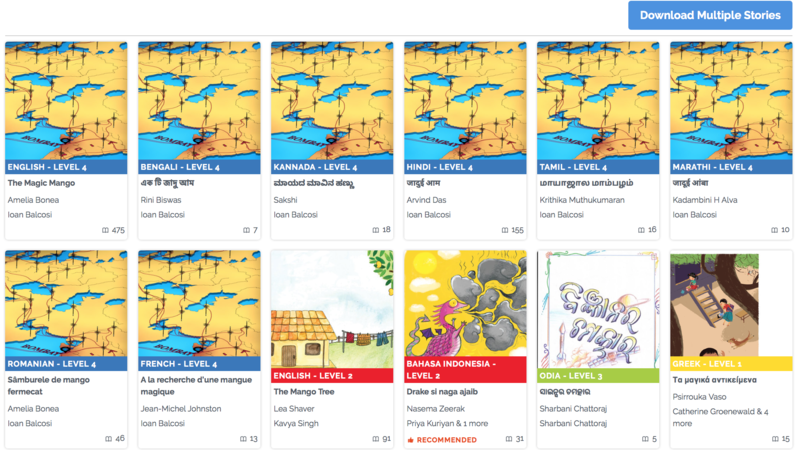
I asked my fellow translators to share some of their experiences of translation with me. As I was reading through their responses, I realized there was a common thread that ran through them. They all spoke about translation as a string of conversations: with themselves, with others, with the past, even with technology. A string of conversations whose aim was to produce a text that would ‘sound well’ in the target language, while also remaining faithful to the English original.
Arvind Das, who worked on the Hindi translation, read the story aloud to his daughter and used her reactions as a guide. As a journalist who works in English and Hindi, Arvind is a seasoned translator. One of his main concerns was to find age-appropriate and culturally sensitive language to match the technical vocabulary of telegraphy. This included words like ‘message’, ‘clerk’, ‘engineer’, etc., which, he felt, children nowadays were more likely to use in English rather than their Hindi equivalents (‘sandeśa’, ‘kirānī’ or ‘abhiyantā’).
Jean-Michel Johnston’s translation into French also drew on conversations with members of his family - in this case, his mother - but in the end he settled for a different conclusion, namely that the latest linguistic fashion might not necessarily be the most aesthetically pleasing one. Jean-Michel’s discussions with his mother revolved around the choice of vocabulary and tenses: should the story be translated into the ‘passé simple’, the tense of his own childhood’s stories and indeed, how he had been taught to write in school, or should it be written in the ‘passé composé’ which, his mother argued, is being increasingly used nowadays, in an attempt to simplify the language? In the end, it was the former option that won this linguistic battle. Why? Because the ‘passé composé’, said Jean-Michel, made ‘everything sound so jilted, bitty, stunted and … difficult to alternate in the chronology/timeline of the story’.
The old - this time in the guise of technology - was also present in Sakshi’s account, who translated the story into Kannada. Once she was done, she tried to type it out, only to find ‘that neither of the two dominant Kannada softwares currently used can be installed on Mac’. She ended up using one of the online platforms available, gradually teaching herself to type in a language in which she was only used to writing. Sakshi’s other concern was about translating place. The original story is set in Bombay/Mumbai, but ‘the language [she] was using for the description of mangoes, the communication between the child and the clerk, and a few other minor details made [her] feel as if they were located in a smaller town’. As she put it, ‘It [was] more to do with processing the narration within my head in the presence of my native language, which made me “see” the story in a different place’.
Finally, Krithika Muthukumaran’s account of translating the story into Tamil suggests that translation can also mediate a different type of encounter with the past, one that has potentially therapeutic effects. In her case, it was her grandmother who helped her navigate the space between languages by scrupulously checking and commenting on each of her paragraphs. As Krithika wrote, ‘[Grandmother] said it made her feel young, helped her exercise her mind…’. And the best bit of all? It seems that her grandmother is set on continuing her translation career with StoryWeaver.
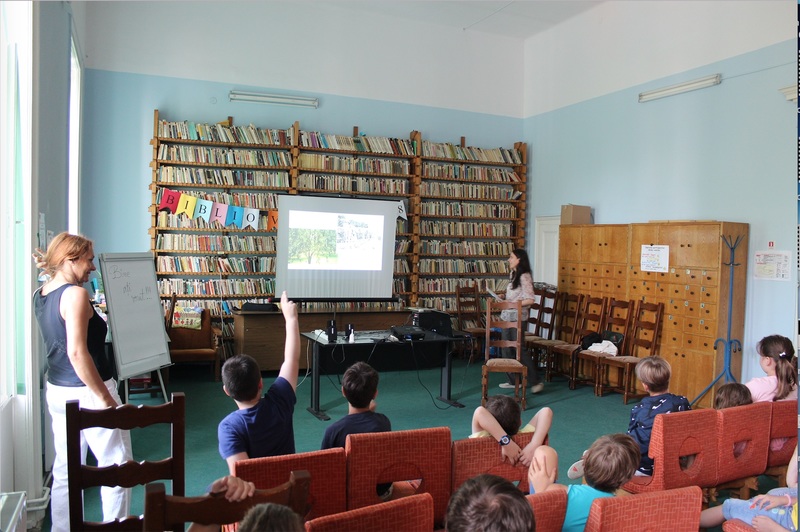 Amelia narrating The Magic Mango at a local library in her hometown to a very engaged group
Amelia narrating The Magic Mango at a local library in her hometown to a very engaged group
Perhaps the lesson to take home from all this is that translation is emotional labour. Perhaps Herta Müller is right when she says that, for her, ‘the criterion of a text’s quality has always been: does it bring about a silent disconnection in the head. Every good sentence flows to a place in the head where what it triggers speaks in something other than words’. As translators, we pull words apart and then we try to rearrange them again to recover that ‘disconnection’ for a different audience. Undoubtedly, some things get lost in this process. But a good many others are gained.
Be the first to comment.